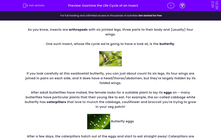As you know, insects are arthropods with six jointed legs, three parts to their body and (usually) four wings.
One such insect, whose life cycle we're going to have a look at, is the butterfly.

If you look carefully at this swallowtail butterfly, you can just about count its six legs, its four wings are joined in pairs on each side, and it does have a head/thorax/abdomen, but they're largely hidden by its folded wings.
After adult butterflies have mated, the female looks for a suitable plant to lay its eggs on - many butterflies have particular plants that their young like to eat. For example, the so-called cabbage white butterfly has caterpillars that love to munch the cabbage, cauliflower and broccoli you're trying to grow in your veg patch!
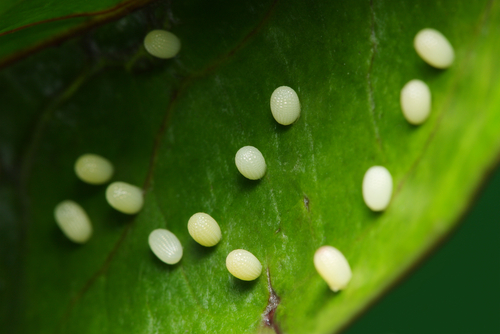 Butterfly eggs
Butterfly eggs
After a few days, the caterpillars hatch out of the eggs and start to eat straight away! Caterpillars are the larval stage of the life cycle, and have an appetite for their food plants that seems to be unstoppable. In many ways, if you look at the butterfly's life cycle, the caterpillar is the eating stage of that life cycle: it's a bit like a walking bag with a mouth!
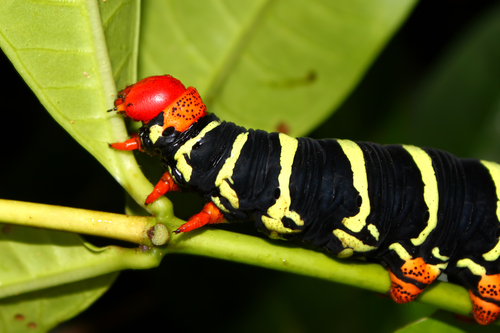
So, the caterpillar munches and grows, munches and grows.
Then, when it's big enough it goes through a significant change. Many caterpillars find a safe place (like your garden shed) where it spins a silken thread to hang from and then ... it changes into a pupa (although there are other names for this, too, like chrysalis and cocoon).
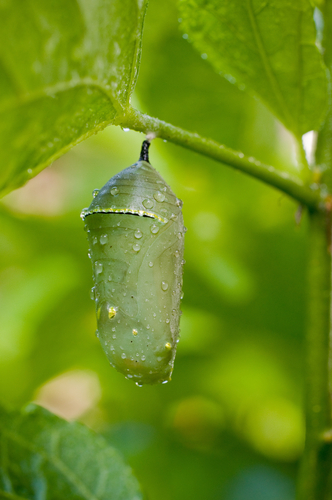
Depending on the type of butterfly (or moth - they go through a very similar life cycle), the butterfly may hatch out of the pupa after a few days or after several months (some butterflies spend the winter inside their cocoons).
Inside the pupa something very special is happening: the various parts of the caterpillar are being taken apart and then rebuilt as a butterfly! It's a bit like that Lego vehicle you built and then you used the same bricks to make a plane.
When it's ready, the pupa splits open and the newly-formed butterfly emerges. Its wings are all folded and it waits while blood is pumped around its new body, unfurling the wings and stretching its legs, drying in the sun. Once it's gained its proper butterfly shape, it takes to the air for the very first time!
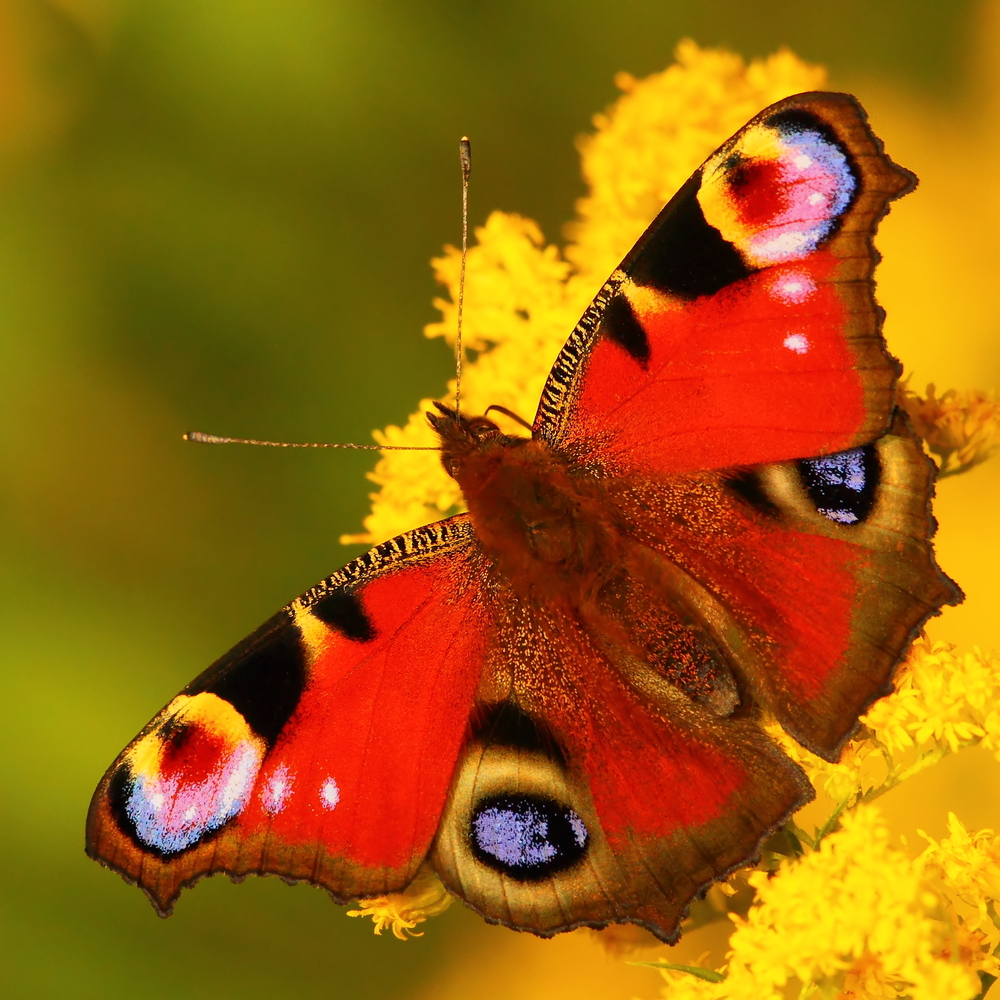
In the life cycle of the butterfly, this flying adult form is (in many ways) the mating stage of the life cycle. The adult has no jaws, but it has got a rolled up drinking straw (called a proboscis - pronounced pro-boss-is) through which it can drink energy-rich nectar from flowers. This is the fuel it needs for flying, finding a mate, mating and laying eggs. Of course, it often pollinates flowers while it drinks, but that's another story!
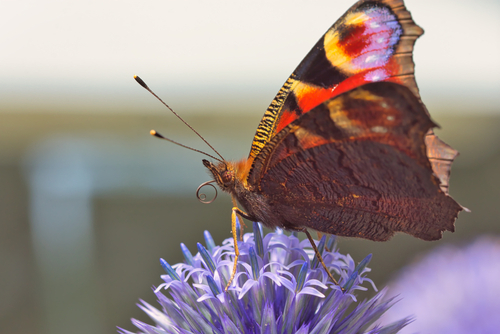 Can you see the butterfly about to uncoil its proboscis feeding tube?
Can you see the butterfly about to uncoil its proboscis feeding tube?
So, that the basics of the butterfly life cycle: egg -> caterpillar -> pupa -> adult and it looks like this:
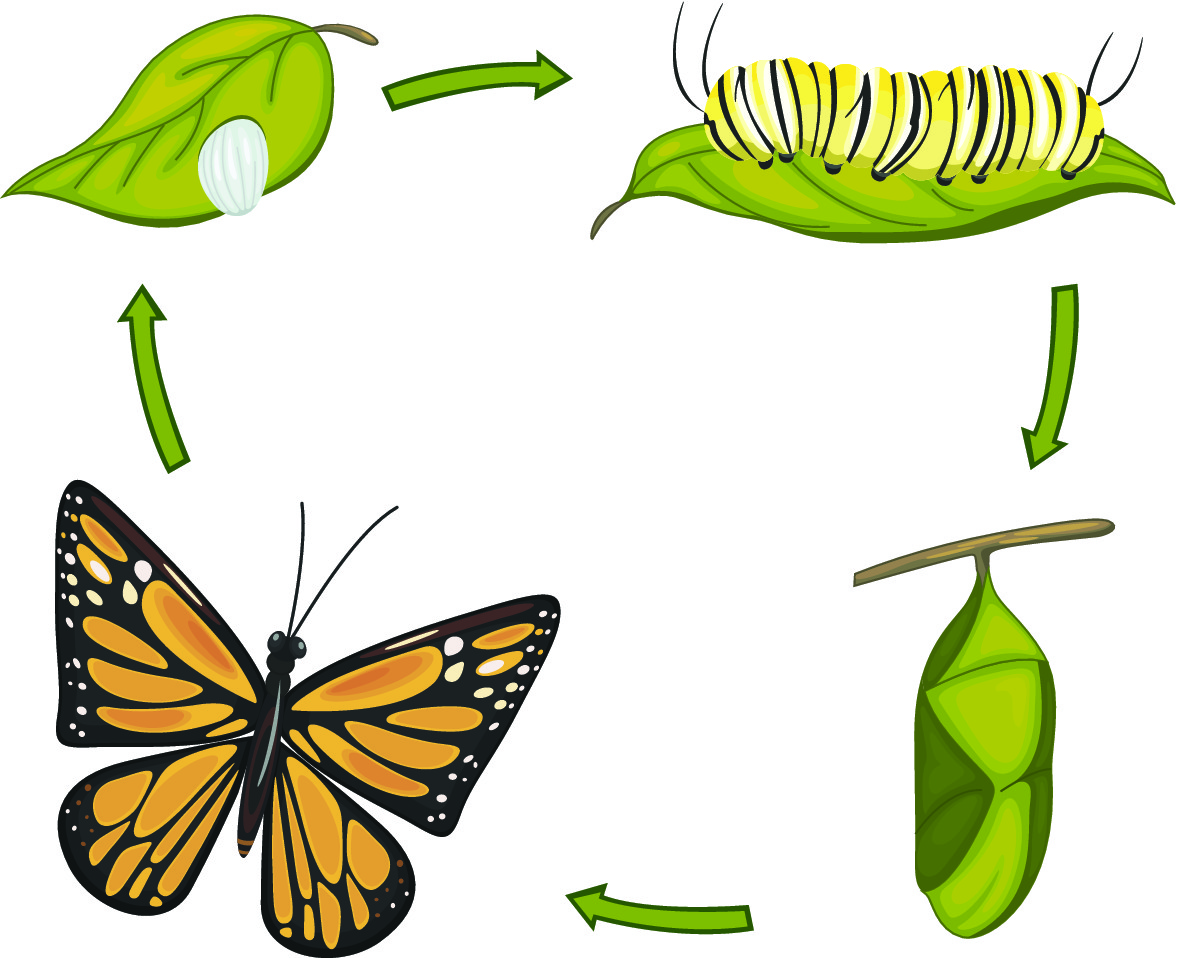
Butterflies and moths, like frogs and toads, are examples of animals that go through a complete change in their shape as they grow. This transformation is given a special (but difficult!) name: metamorphosis (pronounced MET-A-MORE-FO-SIS). See if you can learn it!
Not all insects follow this pattern of growth; indeed, most insects simply hatch out as a smaller version of the adult and grow through various stages to become an adult insect. In between each stage, the insect has to moult (or shed its skin) - remember, it is covered with a tough, non-stretchy exoskeleton. After each moult, its new skin is soft enough for a short while, allowing the insect to grow.
An example of an insect which grows through stages, moulting its skin between each, is an African relative of the grasshopper - the locust.

The young locusts that hatch out of the eggs are called hoppers, because they have no wings and so cannot fly. Mind you, just like the adults, these hoppers are feared for their destructive ability - they are known to strip crops of their leaves in less than a day!
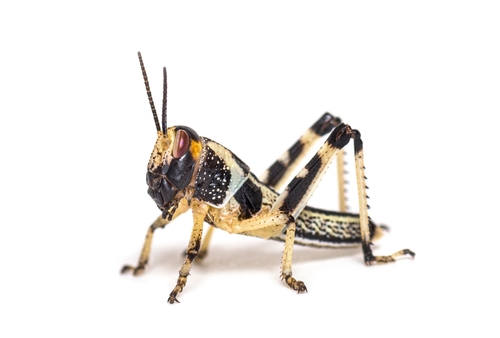 Locust hopper
Locust hopper
Now, are you ready to tackle a few questions on this life cycle and see how well you understand it? Let's see!

